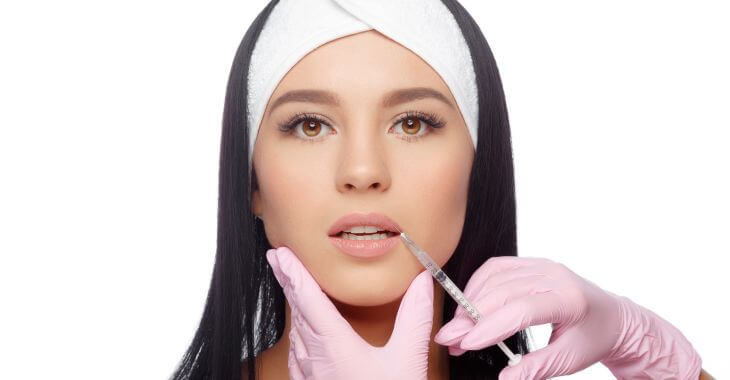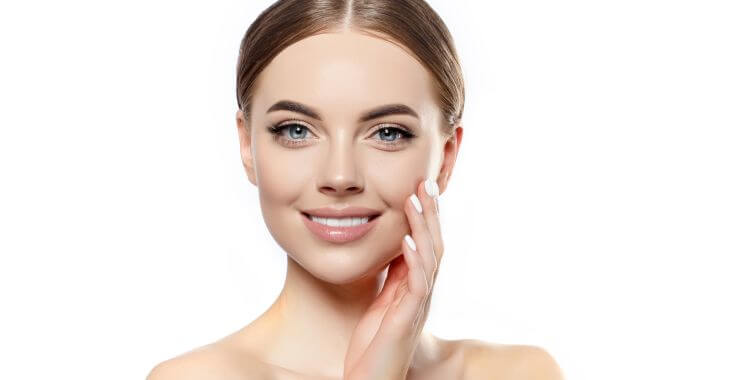What Are the Lip Filler Swelling Stages After Filler Injections?

Lip fillers have become increasingly popular in recent years as a way to enhance the shape and volume of the lips. However, one common concern among individuals considering lip filler injections is the lip filler swelling stages that often occur after the procedure. Here is what you need to know.
Understanding the swelling stages and the healing process can help individuals better prepare for their lip filler treatment and manage their expectations regarding the recovery period. The article will explain how swelling occurs, the healing process during week 1, and how long lip swelling lasts.
Why Do Lip Filler Injections Cause Swelling?
Lip fillers often cause swelling due to the injection process itself and the body’s natural response to the filler substance. When the filler is injected into the lips, it creates a temporary disruption in the surrounding tissues, leading to inflammation and swelling as the body’s immune system reacts.
The filler material, typically composed of hyaluronic acid, attracts water molecules, further contributing to swelling in the treated area. While swelling is a normal and expected side effect of lip filler injections, it typically subsides within a week or two as the body metabolizes the filler.
Lip Filler Injection Healing Process
Before delving into the specific stages of lip filler swelling, it is essential to understand the general healing process following lip filler injections. After the procedure, it is normal for the lips to appear swollen, bruised and tender to the touch.
This initial swelling is a natural response to the injection process and typically subsides within the first few days to a week. Part of the swelling is a reaction to the substance, and the other is inflammation, which may be caused by the injection.
During the healing process, it is crucial to follow the aftercare instructions provided by your injector to minimize discomfort and reduce the risk of complications. These instructions may include :
- Avoiding strenuous activities
- Refraining from touching or rubbing the treated area
- Applying ice packs to reduce swelling
- Staying hydrated
- Avoiding alcohol and blood-thinning medications that can exacerbate swelling and bruising
Healing Process: 1 Week Lip Filler Swelling Stages
The swelling that occurs after lip filler injections typically follow a predictable timeline, with distinct stages that patients can expect to experience during the first-week post-treatment. Here’s a breakdown of the typical lip filler swelling stages:
Immediate Post-Treatment Swelling
It is normal for the lips to appear swollen and slightly larger than desired immediately after receiving lip filler injections. This initial swelling is primarily due to the injection process itself and usually resolves within the first 24 to 48 hours.
During this time, patients may also experience mild discomfort or tenderness at the injection sites. This is when applying ice gently, which may be beneficial to reduce any discomfort and aid in minimizing swelling.
Peak Swelling
The swelling typically peaks within the first 48 to 72 hours after the procedure. During this time, patients may notice significant swelling and bruising around the lips, as well as possible redness or discoloration.
While the lips may appear larger than desired during this stage, it is essential to remain patient and allow the swelling to gradually subside.
Subsiding Swelling
After the initial peak swelling phase, the swelling gradually begins to subside over the next few days. By the end of the first-week post-treatment, most of the swelling should have resolved, and the lips will start to take on their final shape and size.
However, some mild residual swelling may persist, especially in areas that received more extensive treatment or in individuals prone to swelling. Following the post-care instructions provided by the injector can help this resolve faster.
How Long Does Lip Filler Swelling Last?
While the majority of swelling typically resolves within the first week after lip filler injections, some residual swelling may persist for up to two weeks or longer, depending on individual factors such as the type of filler used, the amount injected, and the patient’s unique healing response.
It is essential to be patient during this time and avoid making any judgments about the final results until the swelling has completely subsided. To help expedite the healing process and reduce swelling, patients can take certain measures to promote recovery.
As stated earlier, applying ice packs to the lips for short intervals, avoiding excessive heat or sun exposure, and staying hydrated to support the body’s natural healing mechanisms can shorten the healing process.

Understanding the lip filler swelling stages and the healing process can help patients better prepare for their treatment and manage their expectations regarding the recovery period. Knowing what to expect can help patients plan their activities and routine after their lip filler treatment.
By following proper lip filler aftercare guidelines and allowing sufficient time for swelling to subside, patients can achieve optimal results and enjoy the full benefits of their lip filler injections. To learn more, talk to your aesthetic professional about what to expect before your procedure.
The information provided on this website, including text, graphics, images, and other materials, is intended solely for informational purposes and should not be used as a substitute for professional medical advice, diagnosis, or treatment.



)